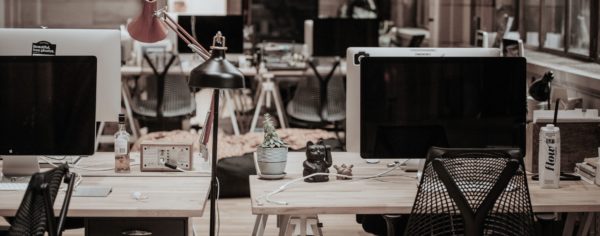The company provides expert consultancy services to commercial operators, and due diligence to investors, with a particular focus on mixed use, airports, travel, and retail property. The team help their clients by delivering expert services in commercial intelligence and quick wins; commercial strategy and vision; space planning and revenue forecasting; and investment advisory and due diligence.
未来工作场所——Benoy + Pragma 讨论会
随着全球从新冠疫情中复苏,企业正在逐步回归实体工作环境。但工作模式和偏好发生了变化,一些员工不愿返回繁忙的城市中心,许多企业也在考虑混合模式的可行性。
那么,在后疫情时代,我们如何吸引员工回归办公室?我们如何设计工作空间来促进互动、协作、福祉和包容性?未来的工作场所是怎样的?
3 月初,我们在伦敦和新加坡举行了圆桌会议,讨论这些关键问题并寻求解决之道。下文即为这两次会议的一些关键要点和见解。
前瞻思考
The APAC perspective
Flexibility, amenity and community
To kick-off the Roundtable discussion held in Benoy’s Singapore studio, Terence Seah, Head of Hong Kong, Singapore and Shenzhen, asked participants to consider how the Covid pandemic has impacted work environments in Asia-Pacific. How, for example, has it changed the way developers design and lease office space?
According to Tay Lim Heng from Keppel Urban Solutions, the pandemic has given rise to a “new concept of development”, with developers pivoting away from the “traditional way of designing, building and sustaining” office buildings. Today, he said, an “asset-light approach” is one way of providing the flexibility and agility companies require.
David Hutton from Lendlease agreed that the pandemic has accelerated change, but cautioned against extreme predictions. “We believe in the future of cities and urban life”, he said that talk of the “death of the central business district” was premature. Confirming that “there’s still a major role for the modern workplace,” he asserted that “healthy, inspiring and collaboration environments” are at the heart of the post-pandemic office. Employees, and younger employees in particular, still crave human interaction. “Leading progressive workplaces underpin an organisations culture and play a big role in attracting and retaining the best talent”.
Nigel Ng, from CapitaLand, added that Covid has led to a “change in mindset towards offices being more differentiated when it comes to the amenities” and spaces on offer. For example, across APAC there’s a rise in demand for “naturally ventilated and flexible workspaces” outside the core office area, with tenant workplace strategies now “extending…to other spaces within [and beyond] the building”. To ensure the continued relevance of a building, core workspaces alone, said Ng, “are not enough to sustain it a building”; but through complementary amenities such as privately owned public spaces, it can act as a hub, enhancing social connections and “anchoring the 20-minute city…hopefully increasing value for the long run”.
Trends in occupancy and co-working
According to Sidharth Dhawan from CBRE, “clients don't need office space for the sake of office space.” Occupiers, he explained, “are being a lot more deliberate in their occupancy, and their office footprint is a means to an end – that end being happy, productive employees”.
But companies are finding it harder to commit to long-term occupancy plans. As a result, said Dhawan, “optionality of footprint” is an increasing trend. Across APAC, in addition to a core footprint allocation, occupiers are requesting a "flexible element”, with a shorter term commitment which they can “keep rolling over”. With this in mind, modularity, agility and choice are “the big themes” in occupancy according to Dhawan as APAC emerges from the pandemic.
Asked to explain flex space ethos and growth strategy, Elizabeth Laws Fuller from WeWork explained that flex space providers essentially “challenge the idea of the traditional space and elevate quality, productivity, and employee experience over a pure focus on price per square foot". As businesses increasingly engage with flex space models, solutions need to be devised according to individual company value propositions and individual employee profiles and personas. Because “divergence is happening”, said Fuller, with some companies wanting to “pack in the desks” and others putting “30 people in a 10,000 square-foot floor plan”. Across this wide-ranging roundtable discussion, other topics included: the value of change management and communication as part of workplace relocation; the new alliance between HR and property experts within the employee wellbeing agenda; and the importance of secure and seamless IT in the age of remote working.
And while pre-pandemic, in markets such as China, the challenge was how to enable homeworking, the question now, as in the UK, is how to get people back into the office. Shona Tay from Colliers remarked that one of the key drivers in APAC is “selling a vision of where the company wants to go”, rather than selling a building or space.


Trends in occupancy and co-working
According to Sidharth Dhawan from CBRE, “clients don't need office space for the sake of office space.” Occupiers, he explained, “are being a lot more deliberate in their occupancy, and their office footprint is a means to an end – that end being happy, productive employees”.
But companies are finding it harder to commit to long-term occupancy plans. As a result, said Dhawan, “optionality of footprint” is an increasing trend. Across APAC, in addition to a core footprint allocation, occupiers are requesting a "flexible element”, with a shorter term commitment which they can “keep rolling over”. With this in mind, modularity, agility and choice are “the big themes” in occupancy according to Dhawan as APAC emerges from the pandemic.
Asked to explain flex space ethos and growth strategy, Elizabeth Laws Fuller from WeWork explained that flex space providers essentially “challenge the idea of the traditional space and elevate quality, productivity, and employee experience over a pure focus on price per square foot". As businesses increasingly engage with flex space models, solutions need to be devised according to individual company value propositions and individual employee profiles and personas. Because “divergence is happening”, said Fuller, with some companies wanting to “pack in the desks” and others putting “30 people in a 10,000 square-foot floor plan”. Across this wide-ranging roundtable discussion, other topics included: the value of change management and communication as part of workplace relocation; the new alliance between HR and property experts within the employee wellbeing agenda; and the importance of secure and seamless IT in the age of remote working.
And while pre-pandemic, in markets such as China, the challenge was how to enable homeworking, the question now, as in the UK, is how to get people back into the office. Shona Tay from Colliers remarked that one of the key drivers in APAC is “selling a vision of where the company wants to go”, rather than selling a building or space.
英国对话——适应新现实
贝诺姊妹公司 Pragma 董事、联合服务商 Claire Stephens 表示,在考虑工作场所设计时,我们需要承认“城市的结构已经改变”。例如,随着人们开始回归办公室,印度孟买的日常通勤发生了重大转变,从之前的公共交通转向了私人交通。正如 Godrej Group 首席助理 Pallavi Navin 所解释的:
“孟买的公共交通非常拥挤……所以[就新冠疫情而言]真正的危险在于你如何到达办公室,而非办公室本身。人们以前乘坐地铁或区间列车,现在乘坐Uber 或有自己的交通方式,这导致了城市交通的增加。”
工作场所设计正在纳入这一转变,需要重新考虑停车、建立接入点和排队系统等问题。“当前,设计首先要解决人们如何进入,然后再设计实际的工作场所。”Navin 说道。“因此,作为设计师,我们的动态发生了变化。”
FTSQUARED 运营主管 Andrew Link 也认同这些观点,他指出英国的通勤人员也担心“重新搭乘火车和地铁”。他认为这可能导致城市“人才外流”至其他地区,并预测在这些地区将出现“办公室数量增加以及质量提高。”
金丝雀码头集团 (Canary Wharf Group) 的 Matt Mitchell 也证实,疫情之后的城市和企业中心不仅没有迅速恢复,还发生了根本性的变化。例如,在建筑运营方面,新冠疫情期间对流通和出口点的关注让人们“更加关注个人空间”。他说,当前工作场所的设计必须考虑“人们如何四处走动......以及如何避免死角和高密度的地方。”

“雇主需要创造一种‘环境和氛围,让员工感觉可以比居家办公和远程办公获得更佳效果’。”
人们想去的地方
吸引员工回归办公室有几种关键策略。第一项策略是适应员工习惯和需求的近期变化,例如增设现场提供食物、饮料和其他基本便利设施。Hunters Contracts 公司董事 Lewis Harman 指出,当人们开始返回伦敦时,他们会“直奔办公室”,而不会停下来喝咖啡或吃早餐。他说,“那些已经发展壮大的公司[现在提供]更多的餐饮设施,这吸引了员工的回归,并且让员工在工作时间都不必离开办公室。”
第二个主要策略是创造“人们想去的地方和空间”。贝诺室内设计总监、联合服务商 Jon Grant 之前曾经解释过,这些空间通常依靠品牌主导的空间营造和设计而实现。Grant 评论道:“办公空间室内设计的使用者越发希望能与品牌体验联系起来(主要源于技术驱动以及对美学和美食的追求)。他们迫切寻找一些真实存在的、可以给他们带来感官和精神激励的事物,但这些已经不再是以实用性为主的一般企业办公环境所能满足的。”
当然,无形的元素,如场所感、认同感和灵感等,将有助于创造令人信服的“回归理由”。Facilitate Corporation 的负责人 Kevin Mullen 认为,除了坐立两用的办公桌和舒适的办公椅之外,雇主还需要创造一种“环境和氛围,让员工感觉可以比居家办公和远程办公获得更佳效果”。Oktra 的内容主管 Tom Hitch 对此表示赞同,他补充




